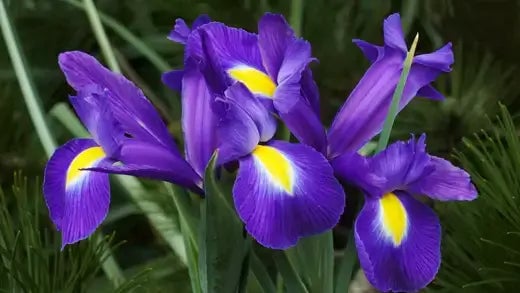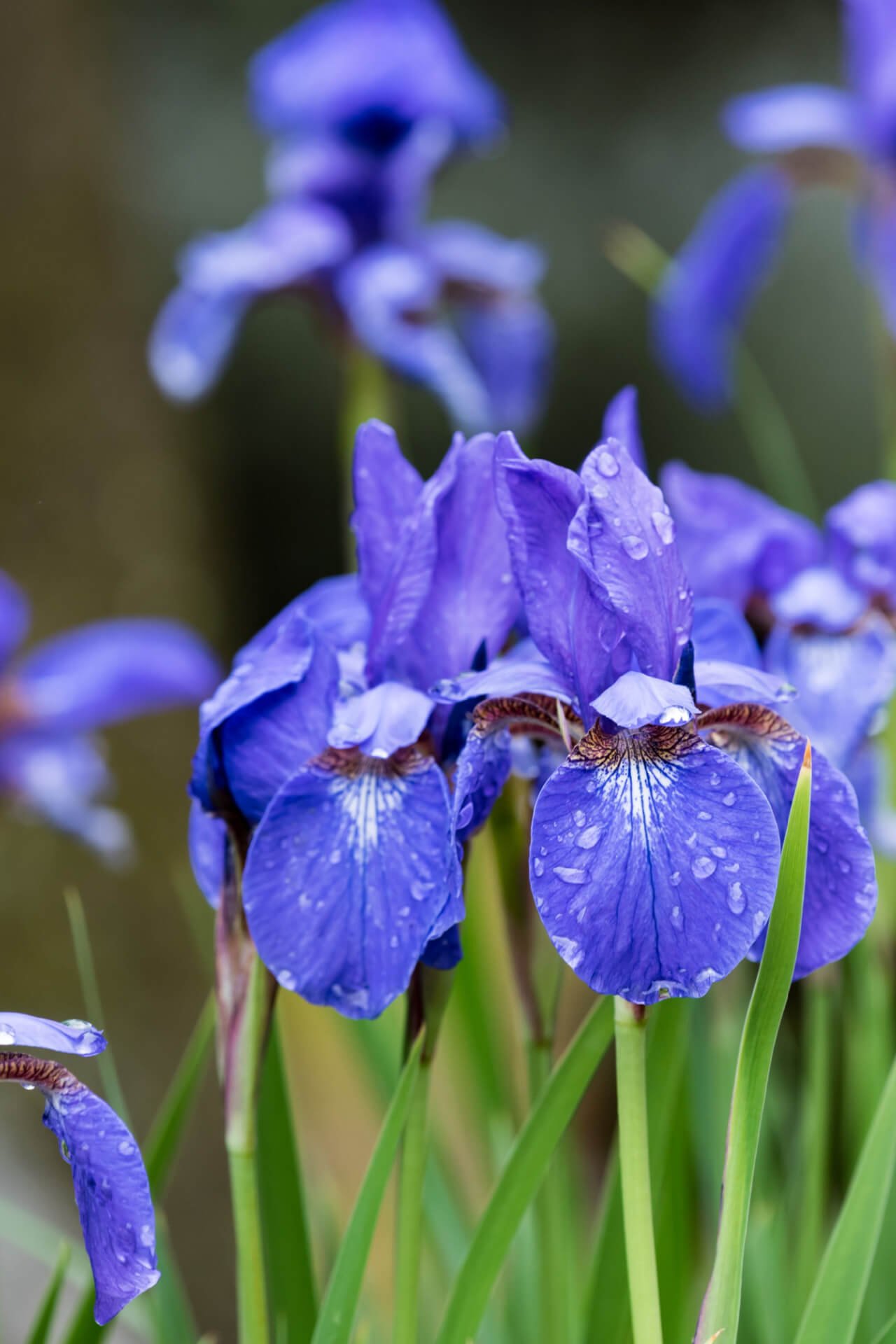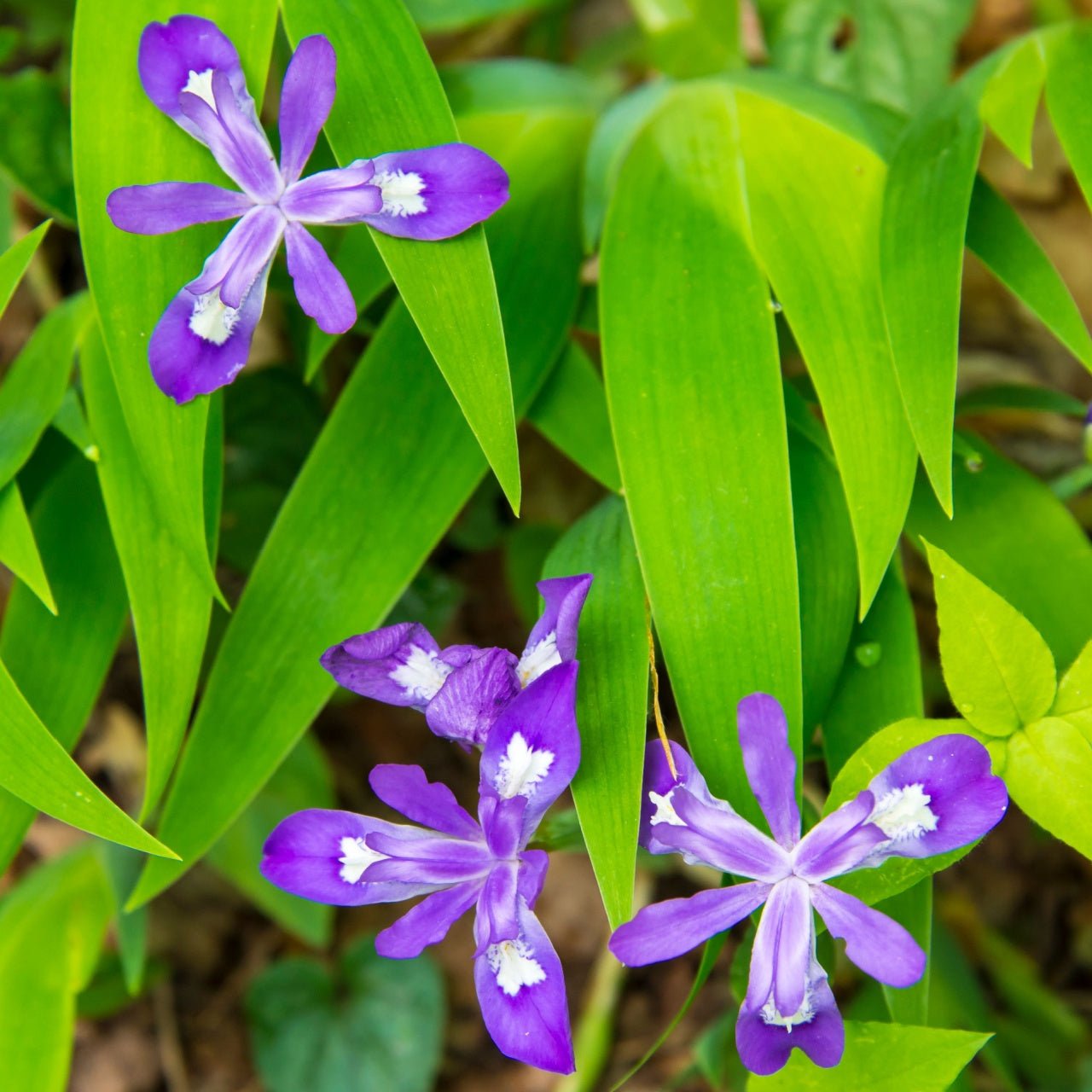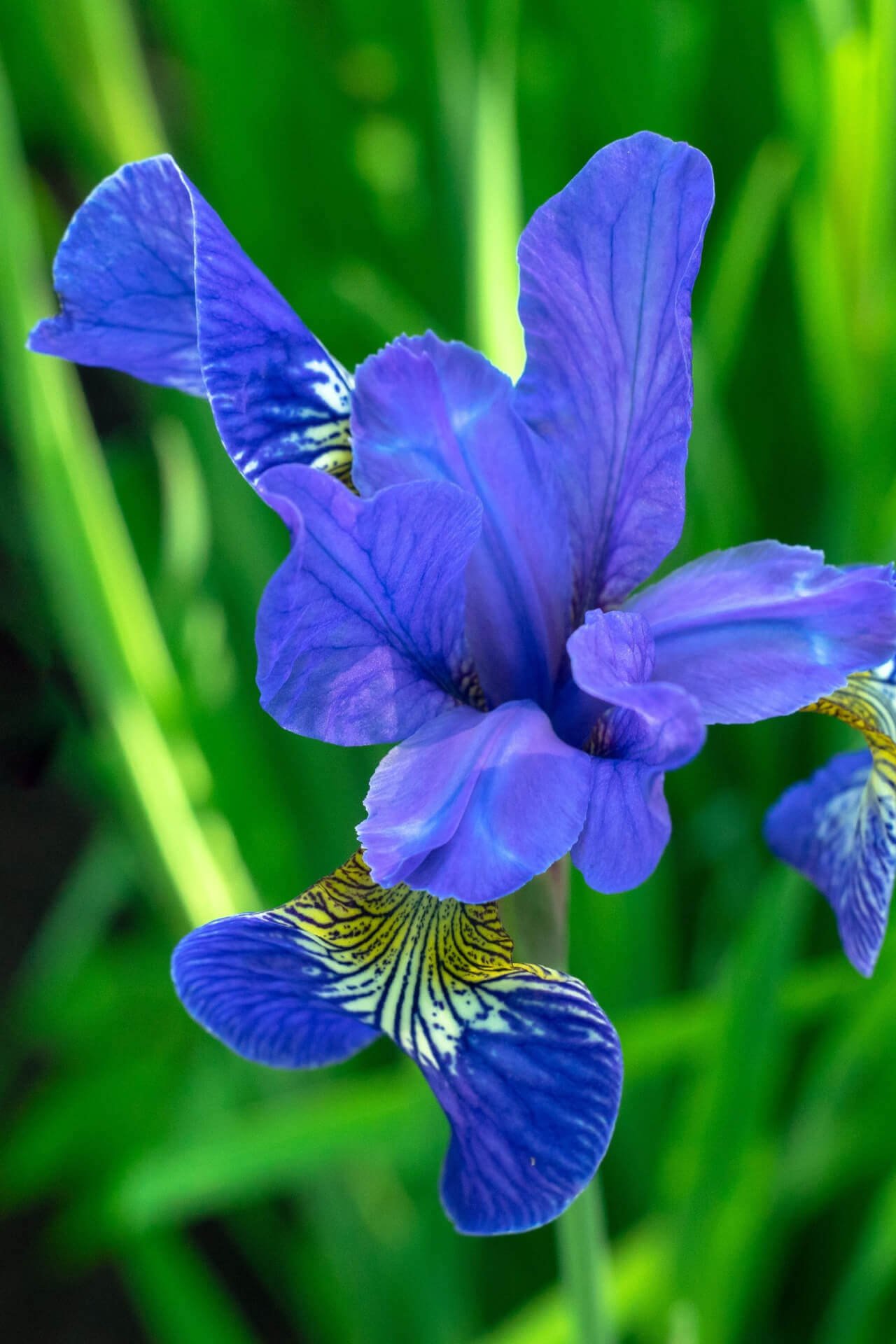Iris comes in a range of colors, including purple, orange, yellow, red, brown, and white.

The Iris is best known for being used in vases and floral arrangements, but many like to plant them in their yards and gardens.
Often you can see a row of Iris plants growing along the side of a gardener's garden or near it because the Iris attracts bees, which will help pollinate the vegetables. The Iris is a beneficial plant to have a garden or other plants because it keeps the bees coming around, which will help keep the other plants thriving and looking great!
Did you know that there are over 200 different species of the Iris known? The Iris is a versatile plant because it does well in deserts, swamps, cold weather, and many other temperatures.
The Bearded Iris and the Siberian Iris are the two most common types of Iris that can be found.
The Iris stems are similar to bamboo stems and hold the Iris bloom, which can sit as high as 3 feet. The only problem with the Iris plant is that it does not hold up well in windy weather, and the stems can be broken easily.
The Iris blooms in the late spring. Generally, the last three weeks to early summer only lasts a short period after it blooms. The Iris has been used throughout history to make wine and other medicinal herbs and cures.

The Iris is versatile because it grows well outside and indoors in plant containers. The Iris needs moderate sun to partial shade and a moist soil base. The majority of Iris plants you will see are purple but can also be found in many other colors.
The purple Iris is also the state flower of Tennessee!
TN Nursery sells a variety of iris. If you have questions, give us a call at 931.692.7325.
Read more

Cattails, or Typha, is a flowering plant commonly found throughout the northern hemisphere in marshy areas and around the borders of streams and lakes.
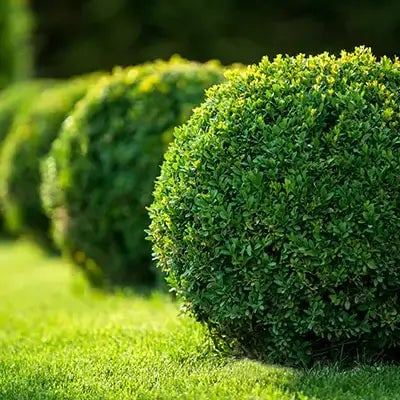
Green Velvet Boxwood and the Wintergreen Boxwood is a popular ornamental shrub grown for its attractive foliage. The leaves are dark green with a velvety texture. Boxwood plants are slow growing an...


